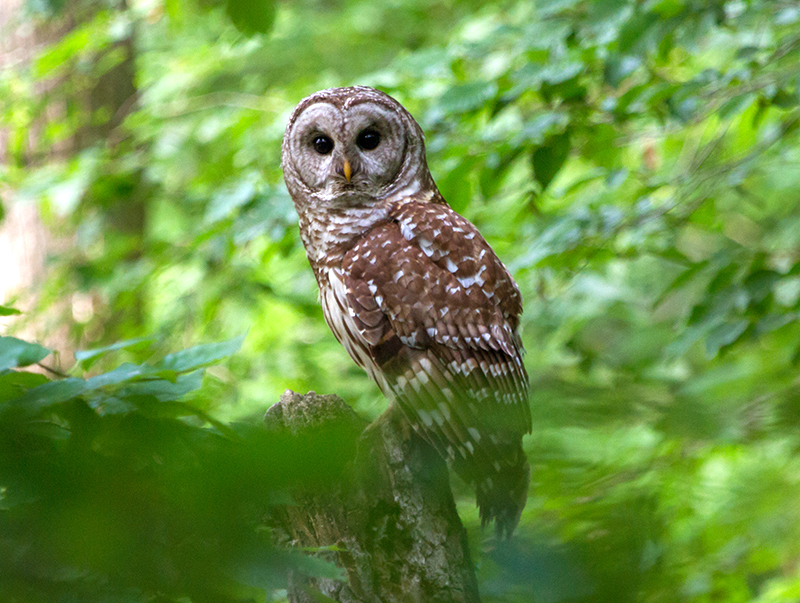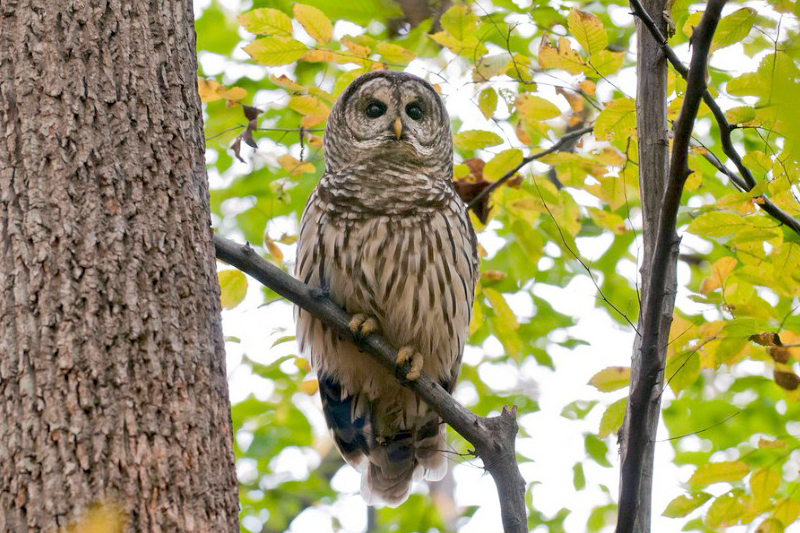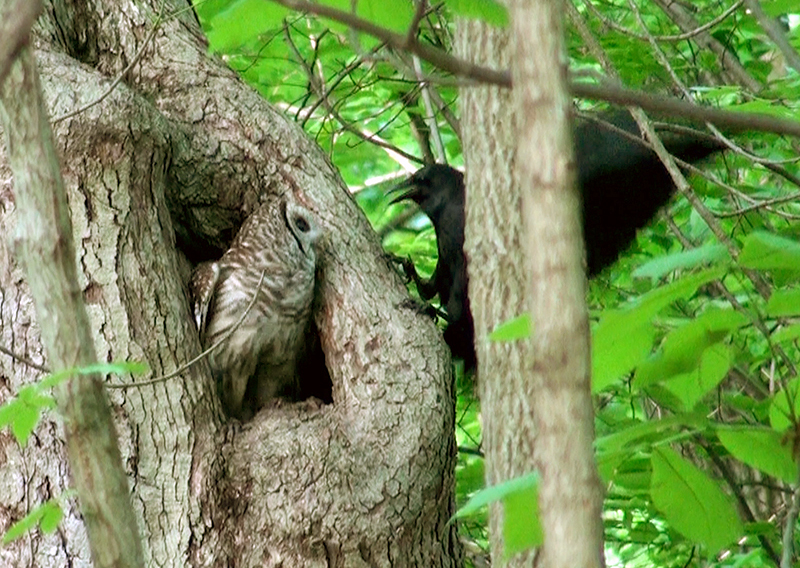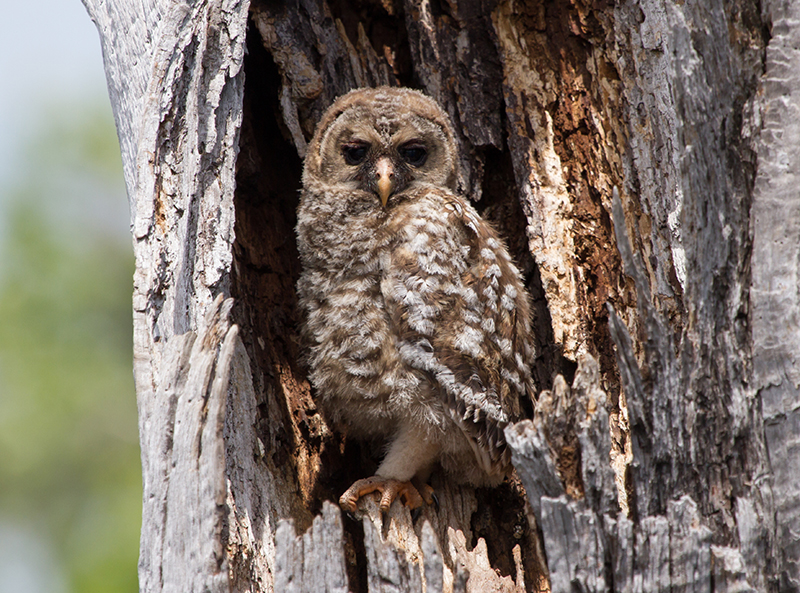| Year-round Resident | |
| Probably Nests near Park |
Barred Owls are year-round residents in the Washington metro area who are rarely seen at Monticello Park. You will have a better chance to find one at Huntley Meadows.
Where to See Them in the Park
Barred Owls are primarily nocturnal and spend most daylight hours roosting unobtrusively. Occasionally, a Barred Owl will come into the park or roost in trees near the park. Because few birders visit Monticello at night, no good information exists about whether owls are in the park after dark. There have been reports of Barred Owls seen and heard at night in the adjacent neighborhood.
Physical Description


Barred Owls are about 21 inches long, with dark eyes and a yellow bill. They have horizontal barring on the breast and vertical streaks on the belly. They have a heart-shaped facial disk and no ear tufts. The sexes look similar, and adult plumage is the same in the spring and fall.

Barred Owls sometimes call during the day, but you should not expect to hear one at Monticello. You sometimes can tell if an owl or hawk is in the park if you hear a lot of crows cawing loudly. Crows regard owls and hawks as threats to their eggs and young. The mobbing behavior seems to work, because most predatory birds do not want to endure the harassment.

Juvenile Barred Owls sometimes show remnants of their downy plumage
Vocalizations
The vocalization of the Barred Owl is the well-known Who Cooks for You, Who Cooks for You-allll. The male and female have slightly different vocalizations.
Hear the vocalizations of the Barred Owl.Notes
The Barred Owl is a close relative of the Northern Spotted Owl, who has spots rather than streaks on its underparts. The Spotted Owl has for decades been at the center of a significant environmental controversy, pitting lumber interests in the Pacific Northwest against environmentalists. What often has been lost in the debate is that the decline of Spotted Owls is a symptom of a larger problem. Owls are near the top of the food chain, and when their numbers decline, that often indicates a problem in the ecosystem in which they live. Another threat to Spotted Owls comes from Barred Owls, who have expanded their range westward. When Barred Owls go into areas with Spotted Owls, the population of Spotted Owls decreases. The National Park Service has written about the problem Spotted Owls are having with Barred Owls.
Origin of Names
Common Names: Barred from the barring on the throat. Owl from the Old English ule, which sounds like their call.
Genus Name: Strix from the Latin for a screech-owl.
Species Name: Varia means variegated, from the markings on the plumage.
Barred Owl video footage
Return to the Index
